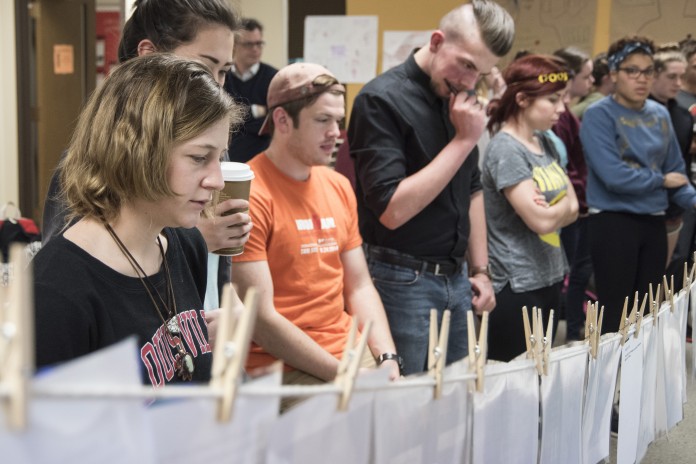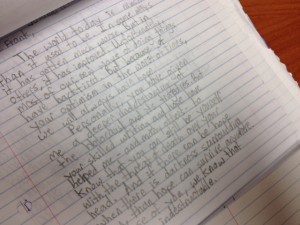
In a handwritten letter to Holocaust victim Anne Frank, a Noe Middle School student writes, “because of your optimism in the worst of times, we will always have hope.”
The heartfelt words are part of a College of Education and Human Development program that incorporates the arts—artwork, drama, music, photography and creative writing —into teaching of the Anne Frank story.

Most adolescents will study Frank’s diary at some point and CEHD professors James Chisholm and Kathryn Whitmore wanted to study an arts-based teaching model that helps students fully grasp the social, historical and personal importance of the book.
“This model is really about helping adolescents see, feel and understand the Anne Frank story on a deeper, more empathetic level,” said Chisholm. “A good example is a strategy in which students were asked to read a passage from Anne’s diary, choose a word that exemplified the emotion and then turn that word into a visual icon.”
Words from the diary such as “lonely,” “outside,” “courage” and “family” were transformed into icons and dramatically re-enacted, while others were displayed as backdrops during an Anne Frank performance. “Some of the icons were haunting,” said Chisholm.
Whitmore said the model relies on three key types of engagement: visual, movement and emotional.
“To really engage students they need to do more than just read,” she said. “They need to move around, visualize, discuss and, ultimately, become emotionally connected to the story.”
Ella, one of a group of Noe 8th graders who taught UofL pre-service English teachers about the project said, “When you see the faces of the soldiers and the faces of the victims, it sticks with you.”
Her classmate, Cassidy described the importance of movement. “You can walk around and be ‘in’ what you are learning,” she said.
Chisholm and Whitmore’s research was supported by the Jewish Heritage Fund for Excellence (JHFE), the UofL Early Childhood Research Center and the Kentucky Center for the Performing Arts. They began collecting data for the model in 2015 with the help of doctoral students Ashley Shelton and Irina McGrath. JHFE awarded the researchers a $58,000 grant to publish their work and a book is expected to be ready in 2017. The book’s working title is “Layering Literacies: Adolescent Readers Seeing, Being, and Feeling Challenging Texts.”
Chisholm said the CEHD team was fortunate to partner with the Louisville arts community to leverage local performances and projects. Namely, the Kentucky Center for the Performing Arts sponsored the Anne Frank: Bearing Witness Project and Stage One produced “And Then They Came for Me: Remembering The World of Anne Frank.”
Research for the teaching model was done in collaboration with teachers at four middle schools: Noe, Western, Jefferson County Traditional and St. Francis of Assisi.

































